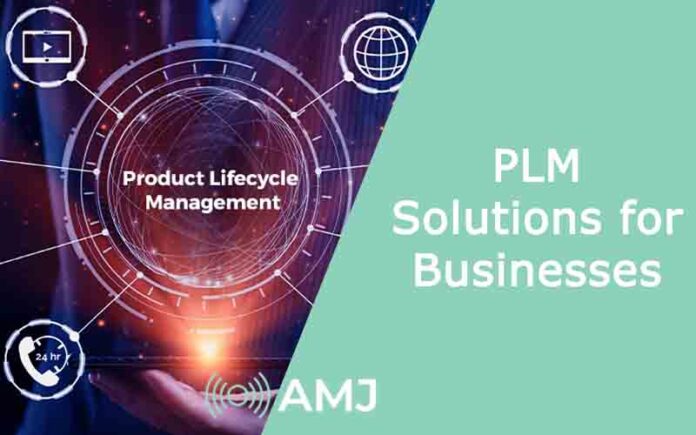Product lifecycle management (PLM) has become crucial for modern businesses seeking to maintain a competitive edge in the market. This article delves deeper into what PLM solutions entail, how they aid businesses, and why they’re increasingly becoming a focal component of operational strategies in different industries. Keep reading to learn more about PLM solutions for businesses.
Contents
- 1 Understanding Product Lifecycle Management
- 2 Benefits of PLM Solutions to a Business
- 3 Implementing PLM Solutions in a Business
- 4 Role of PLM in Digital Transformation
- 5 Integrating PLM With Other Business Systems
- 6 Ongoing Maintenance and Improvement of PLM Systems
- 7 Addressing the Challenges Posed by PLM Implementation
Understanding Product Lifecycle Management

PLM involves managing the entire lifecycle of a product, from its conception, design, and manufacture to its service and disposal. PLM integrates data, business systems, and people in an extended enterprise. The initial idea behind developing PLM solutions was to eliminate waste and improve efficiency in the product development process.
PLM encompasses various activities, including engineering design, supply chain, quality, and project management. With efficient coordination, various business processes become streamlined, resulting in more efficient planning, development, and execution of projects. It not only improves project outcomes but also improves customer satisfaction and boosts profitability.
PLM essentially forms a coherent information framework that amplifies the communication of product details across the business. This infuses a sense of transparency and improves collective decision-making. The integrated approach noticeable in PLM makes workflow management more efficient. Through PLM solutions, businesses can accommodate and manage changes that often emerge during product development, ensuring a smooth transition from one stage to the next.
Benefits of PLM Solutions to a Business
PLM comes with numerous advantages. The first is improved product quality since it ensures all your product data is in one place. This makes it easy to track and rid the collection of any inconsistencies, leading to the production of high-standard and reliable products. It also reduces the risk of failures and recalls that could tarnish your brand’s reputation and result in huge losses.
Effective automation of business processes is another significant advantage of PLM. It eliminates the use of paperwork, reducing human error and improving efficiency. PLM software can take over tasks that would otherwise be time-consuming and costly, such as maintaining compliance with industry-specific regulations, updating product records, planning resources, and streamlining workflow.
One of the major benefits of PLM is its ability to facilitate collaboration among team members. Employees can easily share ideas, exchange feedback, and contribute to product development through digital tools. This seamless communication improves teamwork and enables individuals and departments to bring their unique expertise. Consequently, a culture of constant improvement is fostered, encouraging employees to think creatively and innovate. This collaborative environment enhances the quality of the end product and nurtures the growth of new ideas and concepts.
Additionally, PLM promotes an effective response to market changes. Organizations need to adapt quickly to evolving market trends in the fast-paced business landscape. Having all product-related information in a centralized digital platform allows decision-makers to track market demands and make informed strategic choices easily. This agility in decision-making allows organizations to respond promptly to shifts in customer preferences, emerging technologies, or industry disruptions. As a result, companies can stay ahead of their competitors by consistently introducing innovative products that meet the ever-changing demands of the market.
Implementing PLM Solutions in a Business
Implementing PLM solutions in an organization requires careful planning and strategy. The first step involves evaluating your current processes and identifying areas that need improvement. Effective PLM implementation varies with each business, depending on business size, industry, and product complexity.
The second step is to define your PLM strategy. This process includes defining the roles and responsibilities of everyone involved, setting objectives, and coming up with a roadmap that will guide the implementation process. Ensuring the PLM solution aligns with the overall business strategy and supports your business goals is critical.
Implementing PLM solutions in phases, starting with the most critical components, is advisable. This approach reduces disruption and helps the organization to adapt more seamlessly. Remember, the goal is not just to implement a PLM solution but to ensure it contributes to the overall organizational growth and success.
Role of PLM in Digital Transformation
Digital transformation involves using technology to improve business processes, culture, and customer experiences. PLM plays a crucial role in this transformation by facilitating the shift from traditional methodologies to a more efficient, digitized system. It enhances the ability to promptly capture, manage, and disseminate product-related information across the organization and to stakeholders.
PLM allows businesses to incorporate significant automation in their operations, reducing human error and increasing efficiency. Having all product-related information in a common place makes sharing and accessing information easier. This promotes a smoother flow of tasks, allowing businesses to operate faster and adapt swiftly to changing market trends.
In the era of Industry 4.0, where robust data management and analytics are the backbone of any successful digital transformation, PLM becomes vital. It forms a critical part of an organization’s data strategy, ensuring accurate, complete, and timely data is available when needed, without which strategic decision-making would be jeopardized.
Integrating PLM With Other Business Systems
PLM doesn’t exist in a vacuum. It’s often integrated with other systems within an organization, including enterprise resource planning (ERP), manufacturing execution systems (MES), and customer relationship management (CRM). This integration allows seamless communication and data transfer across multiple departments and processes.
Integrating PLM with ERP, for example, enhances the coordination of information regarding product development and financial data, ensuring the entire life cycle is well-coordinated and financing is not an obstacle. On the other hand, integrating with MES improves manufacturing processes’ control and visibility, enhancing productivity and reducing lead times.
It’s worth mentioning that integrating these systems should be done carefully, with each system’s specific purpose in mind. The goal is to create a complementary system that is powerful and efficient enough to meet the business’s unique needs.
Ongoing Maintenance and Improvement of PLM Systems
Like any other business system, it’s important to continuously maintain and improve your PLM system to ensure optimal performance. Regular updates are necessary to keep abreast with new trends and technological advances that could enhance your system’s capabilities.
Staff training must consistently equip them with the knowledge and skills to navigate the system effectively. Remember, the success of your PLM system is as good as the people using it. Furthermore, the system should be flexible enough to be refined and adjusted as your business needs evolve.
Also, consider involving users in the enhancement process. Their hands-on experience can provide valuable insights into how the system can be refined to make their work easier and more productive. In the long run, this will lead to improved job satisfaction, reduced turnover, and a stronger and more effective PLM system.
Addressing the Challenges Posed by PLM Implementation

PLM implementation is not without challenges. These include technical issues, employee resistance, and a lack of proper understanding of how PLM fits into the overall business strategy. However, these hurdles can be overcome with a proper approach and effective leadership.
It’s essential to involve IT experts in the planning and implementation process for technical issues to anticipate potential challenges and prepare substantial solutions. Employee resistance can be mitigated through adequate communication about the benefits of PLM and involving them in the implementation process.
Although PLM may seem complex, it ensures businesses stay competitive in the modern market. A comprehensive understanding of how PLM can fit into your business strategy can aid in overcoming the challenges, bringing you closer to reaping the full benefits of its implementation.
Product lifecycle management is a transformative business strategy with immense business potential. It’s not just a tool but a comprehensive approach to managing the intricacies of product development, a route that, when followed, aids businesses in producing better products, optimizing operations, and ultimately achieving their goals.












![Index of Money Heist [Season 1, 2, 3 & 4 – All Episodes, Cast and Plot] Index of Money Heist](https://www.asiamediajournal.com/wp-content/uploads/2021/05/Index-of-Money-Heist-3-100x70.jpg)